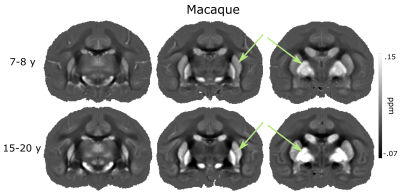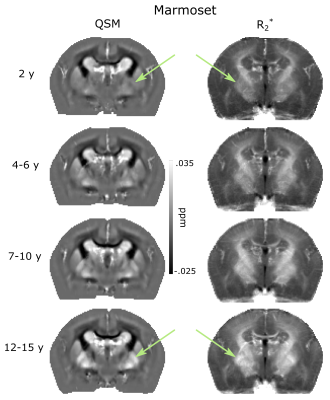Rakshit Dadarwal1,2, Judith Mylius1, and Susann Boretius1,2,3
1Functional Imaging Laboratory, German Primate Center, Göttingen, Germany, 2Georg August Universität Göttingen, Göttingen, Germany, 3Leibniz Science Campus Primate Cognition, Göttingen, Germany
1Functional Imaging Laboratory, German Primate Center, Göttingen, Germany, 2Georg August Universität Göttingen, Göttingen, Germany, 3Leibniz Science Campus Primate Cognition, Göttingen, Germany
In this work we demonstrate the potential of QSM and R2* to characterize healthy brain aging in macaques and marmosets.


